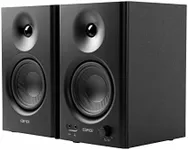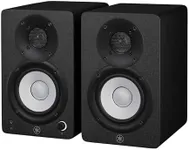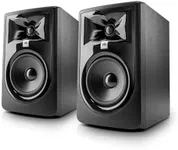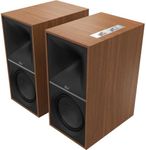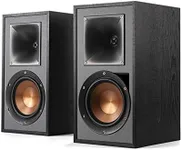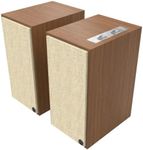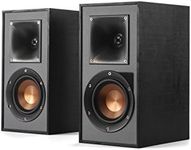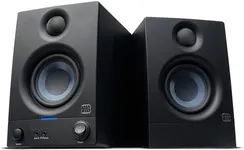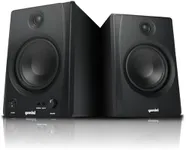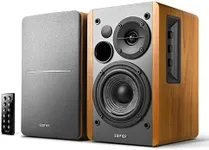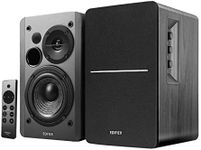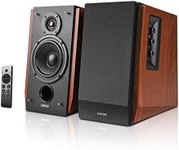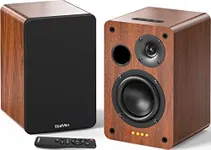Buying Guide for the Best Powered Speakers For Turntable
When choosing powered speakers for your turntable, it's important to consider several key specifications to ensure you get the best sound quality and performance for your needs. Powered speakers, also known as active speakers, have built-in amplifiers, which means you don't need a separate amplifier to drive them. This makes them a convenient and often more compact solution for your audio setup. Here are the key specs you should consider and how to navigate them to find the best fit for you.Power Output (Wattage)Power output, measured in watts, indicates how much power the speakers can handle and how loud they can get. Higher wattage generally means more volume and better performance at higher volumes. For small to medium-sized rooms, speakers with 20-50 watts per channel are usually sufficient. For larger rooms or if you prefer listening at higher volumes, look for speakers with 50-100 watts or more per channel. Consider your room size and listening habits to determine the right power output for you.
Frequency ResponseFrequency response measures the range of sounds the speakers can reproduce, from the lowest bass to the highest treble, and is usually given in Hertz (Hz). A typical good range for speakers is 20 Hz to 20,000 Hz, which covers the full range of human hearing. If you enjoy deep bass, look for speakers with a lower end of around 20-40 Hz. For clear highs, ensure the upper range reaches at least 20,000 Hz. Your music preferences can guide you here; for example, bass-heavy genres like hip-hop or electronic music benefit from a wider low-end range.
Driver SizeDrivers are the components inside the speakers that produce sound, and their size can affect the sound quality. Larger drivers (6-8 inches) can produce deeper bass and are better for larger rooms or bass-heavy music. Smaller drivers (3-5 inches) are more compact and can still provide good sound quality, especially in smaller rooms or for genres that don't rely heavily on bass. Consider the size of your room and your music preferences when choosing driver size.
Connectivity OptionsConnectivity options determine how you can connect your turntable to the speakers. Common options include RCA inputs, which are standard for most turntables, and sometimes Bluetooth for wireless connections. Some speakers also offer optical or USB inputs for more versatility. Ensure the speakers you choose have the necessary inputs to connect to your turntable. If you plan to use the speakers with other devices, consider additional connectivity options that might be useful.
Built-in Phono PreampA built-in phono preamp amplifies the signal from your turntable to a level that the speakers can use. Not all powered speakers have a built-in phono preamp, so if your turntable doesn't have one, you'll need speakers that do. If your turntable already has a built-in preamp, this feature is less critical. Check your turntable's specifications to see if it has a built-in preamp, and choose speakers accordingly.
Size and DesignThe size and design of the speakers can affect both their placement and how they fit into your room's decor. Larger speakers can provide better sound quality but may take up more space. Smaller speakers are more compact and easier to place but may not deliver the same level of performance. Consider the available space in your room and your aesthetic preferences when choosing the size and design of your speakers.

